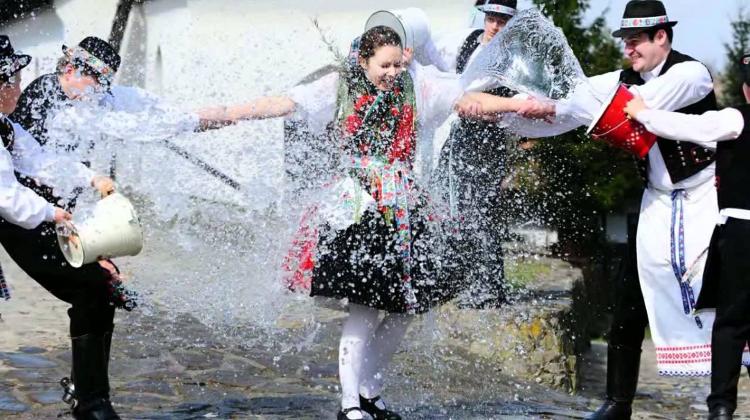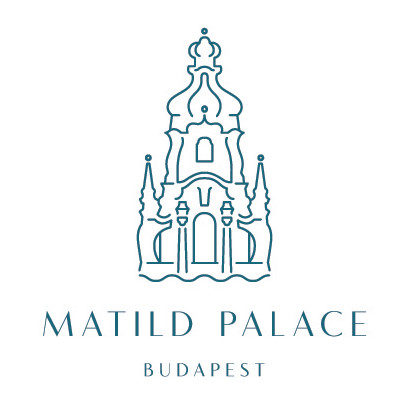Insider's Guide: Easter in Hungary - Where Faith Meets Folklore Celebrations
- 14 Apr 2025 6:26 AM

Easter in Hungary merges the story of Christ’s resurrection with symbols of renewal, fertility, and even courtship rituals. One of the most charming customs involves the exchange of decorated eggs and playful poems.
Sprinkling and Verses

On Easter Monday, boys traditionally visit girls to recite a short, often humorous poem before ‘sprinkling’ them with water or perfume - a symbolic gesture of renewal and fertility. The rhyme, often learned in kindergarten, goes like this:
"Through the greenwood going
I saw a blue violet growing
I saw it start to wither
May I water this flower?"
In rural Hungary, the tradition was once more robust - young men would pour cold well water over girls, or even dunk them in streams! While today it’s more common to use a splash of perfume, the symbolic act remains an important part of the holiday. Women of all ages, from relatives to coworkers, may find themselves pleasantly (or not-so-pleasantly!) perfumed on Easter Monday.
Young women still dress up and await their admirers, and take pride in receiving many visitors. In return for being “watered,” they offer painted eggs, homemade cookies, and a small glass of alcohol. The ritual playfully honors femininity, spring, and romantic tradition.
The Art of the Easter Egg 
Egg decorating in Hungary is both a tradition and an art form. While red-dyed eggs - symbolizing Christ’s blood and eternal life - have been part of Christian Easter customs for over a thousand years, Hungarian egg decoration is uniquely rich in folk motifs.
Patterns include swirls of flowers, geometric shapes, ancient symbols like the sun wheel or cockscomb, and floral designs that echo traditional Hungarian embroidery.
Techniques range from:
Wax-resist dyeing: where molten wax is applied to the shell with a quill, then removed after dyeing.
-
Engraving: the dyed egg is scratched with a knife to reveal paler patterns.
-
Natural dyeing: boiling eggs with onion skins yields a deep brown hue, enhanced by rubbing the shells with bacon fat for shine.
-
Leaf impressions: sticking small leaves to the shell before dyeing creates beautiful natural silhouettes.
-
Horseshoe embellishment: tiny metal horseshoes are affixed to blown eggs by skilled artisans.
Though chocolate eggs first appeared in the 19th century, traditional decorated eggs remain a cherished part of Hungarian Easter.
One famous creation from that era depicted the Széchenyi Chain Bridge (still under construction at the time) in chocolate - a fusion of confectionery and national pride.
The Easter Bunny
Unlike other traditions, the Easter Bunny is a relatively recent arrival in Hungary, only becoming widespread in the 20th century. It originated from German culture and gradually made its way from urban households to rural communities.
A Festive Table: Ham, Eggs & Braided Loaf

No Hungarian Easter is complete without a hearty holiday meal. The table is laden with:
-
Fragrant smoked ham
-
Eggs boiled in the ham broth
-
Grated horseradish (plain or with vinegar)
-
Mustard, radishes, spring onions
-
Braided Easter loaf—a light, golden yeast bread shaped into a circular braid
Lamb dishes, nut or poppy seed rolls, and seasonal sweets may also appear.
In some families, the Easter meal is blessed by a priest after Mass. On farms, the best ham from the winter pig slaughter is carefully smoked and reserved for this special occasion. Today, people still take great care in selecting the right ham—whether it’s a traditional bone-in piece, a smoked knuckle, or a leaner, boneless version.
The Easter loaf is a particularly cherished item, baked in Hungarian homes for over six centuries. It’s not only part of Easter, but also weddings and Christmas celebrations across the countryside.
Whether you’re new to Hungary or a long-time resident, Easter offers a colorful and meaningful way to experience local culture. From poetic traditions to artisan eggs and festive feasts, it’s a season where the past meets the present, and hospitality is at the heart of it all.
Source:
itshungarian.hu
Republished with permission























LATEST NEWS IN community & culture